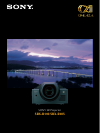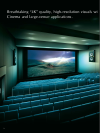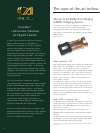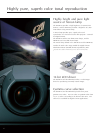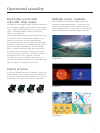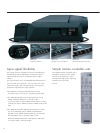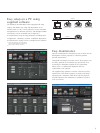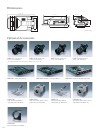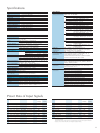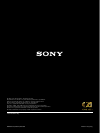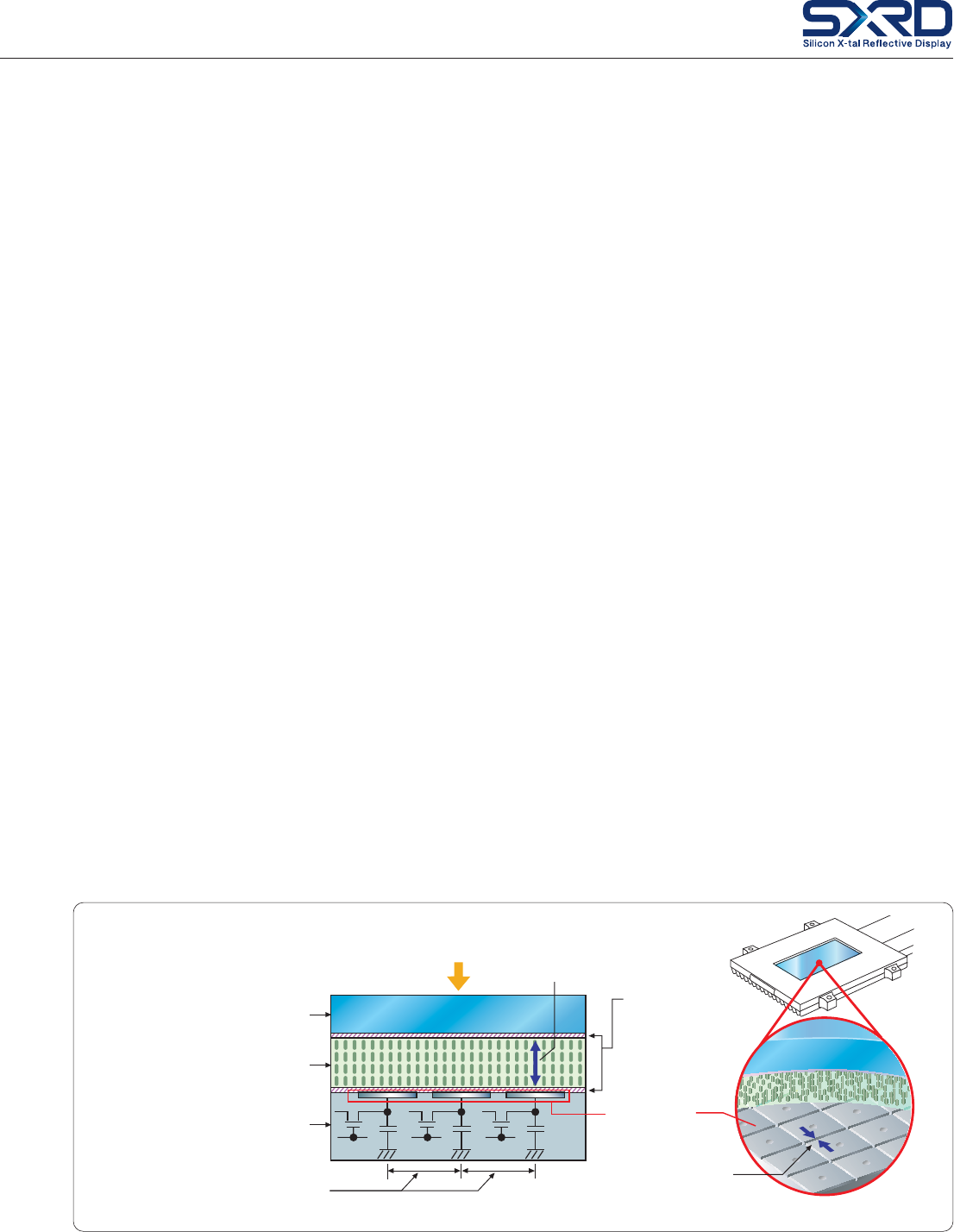
The SXRD device also adopts a structure that does not use
"spacers" - columns found in conventional reflective liquid
crystal devices to maintain a constant gap between the liquid
cell floor and the top of the device. Spacers tend to both
scatter and reflect light, which can impair high contrast
pictures. In the spacerless SXRD device, these artifacts are
no longer seen.
Short response time
The thin cell gap structure in SXRD devices also contributes
to an ultra-short response time of 5 milliseconds. The SXRD
device reacts promptly to the instantaneous change of colors,
enabling the projector to display a smooth motion.
Consequently, the SRX-R110 and SRX-R105 are free from
motion blur – a particularly significant benefit for visuals that
include fast-moving objects.
Reliable imaging device
The SRX-R110 and the SRX-R105 use high-power bright
lamps. As a result special attention has been paid to the
reliability of the SXRD device. The inorganic materials
utilized for the alignment layer of the SXRD device are
resistant to deterioration or deformities that could occur due
to the intense heat and light generated by the powerful
projector lamp.
Thin liquid crystal cell gap
Another important factor enabling the high contrast of the
SXRD device is its ultra thin cell gap of less than
2 micrometers. With conventional Vertically Aligned Liquid
Crystal systems, a thin cell gap could not be achieved. Sony
has overcome this difficulty through the use of innovative
planarization technology in the silicon backplane structure
and an advanced Silicon wafer-based assembly process.
Vertically Aligned Liquid Crystal system
In every type of projector system, displaying absolute black
is a major issue in order to achieve a high contrast ratio.
In other words, the contrast ratio of a projector depends on
how effectively the light from the source can be blocked so
it does not leak through the LCD device.
All Liquid Crystal Display (LCD) devices control the amount
of light to be projected by applying an electric field to the
liquid crystal gap. In typical LCD devices, black is produced
when electric field is applied across the liquid crystal cell
gap. However molecules near the surface of the glass
substrate may not be accurately controlled due to the
influence of the alignment film. This is not an issue for
bright images. However, when displaying dark black
images, light can tend to leak from the LCD device, since
the molecules near the surface are less accurately controlled,
resulting in a creamy black color.
The SXRD device does not exhibit these characteristics.
This is because the Vertically Aligned Liquid Crystal system
displays black when an electric field is not applied and
because all molecules are in the correct alignment to block
light. The direct result is a far deeper black level, leading to
a high contrast ratio.
High-Density Pixel Pitch 8.5 µm
• 4 x Full-HDTV (4096 H x 2160 V pixels)
Thin Cell Gap (2.0 µm) Space-less
• Short response time < 5 msec
• High Device Contrast ratio 4000 : 1
Light
Inorganic
Alignment Layer
• High reliability
Vertically Aligned Liquid Crystal
Glass Substrate
Silicon Backplane
Narrow Inter-Pixel
Spacing (0.35 µm)
• High fill factor 92 %
• High reflectivity
Aluminium Pad
5
logy for high picture quality
SXRD Cross-Section view



